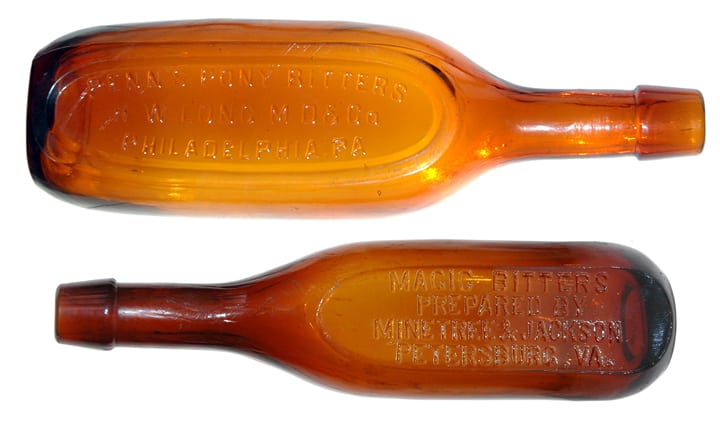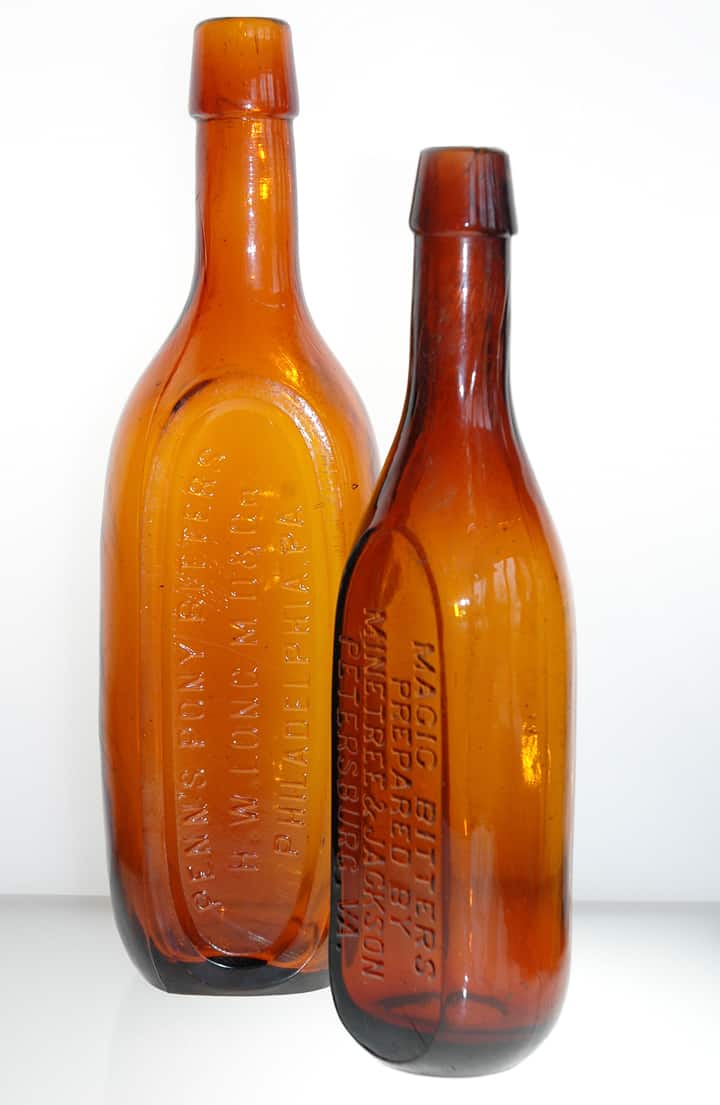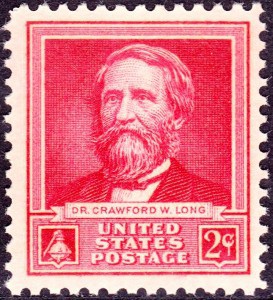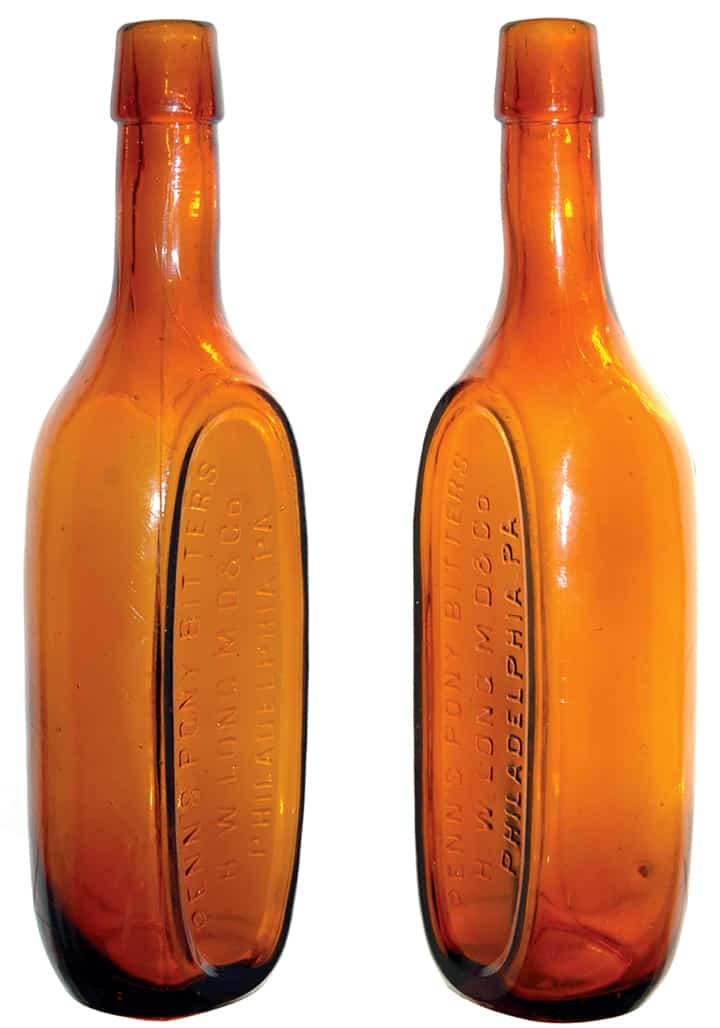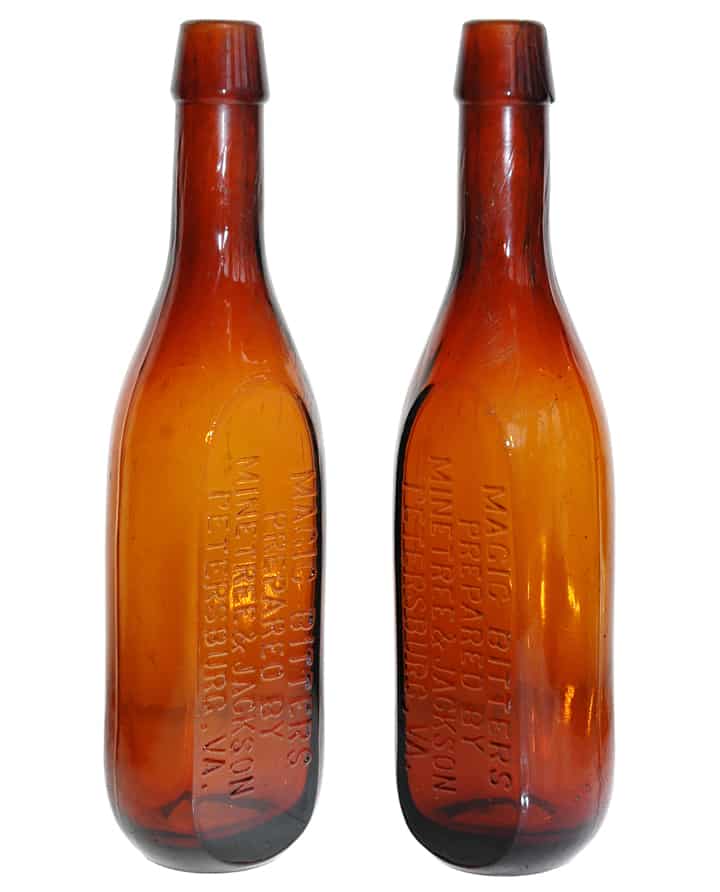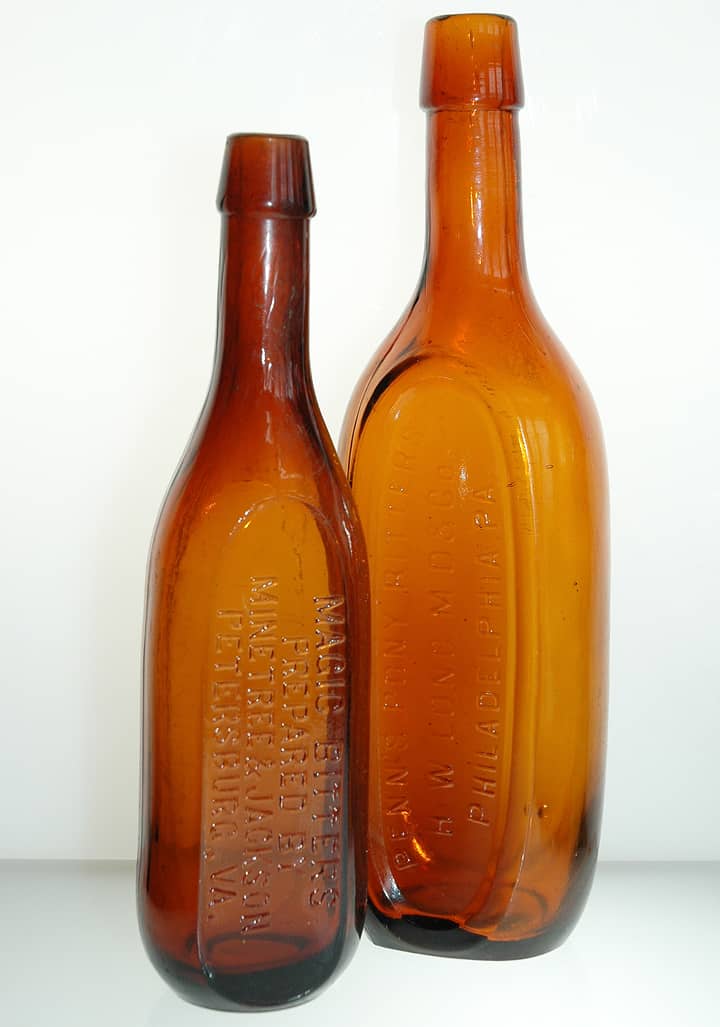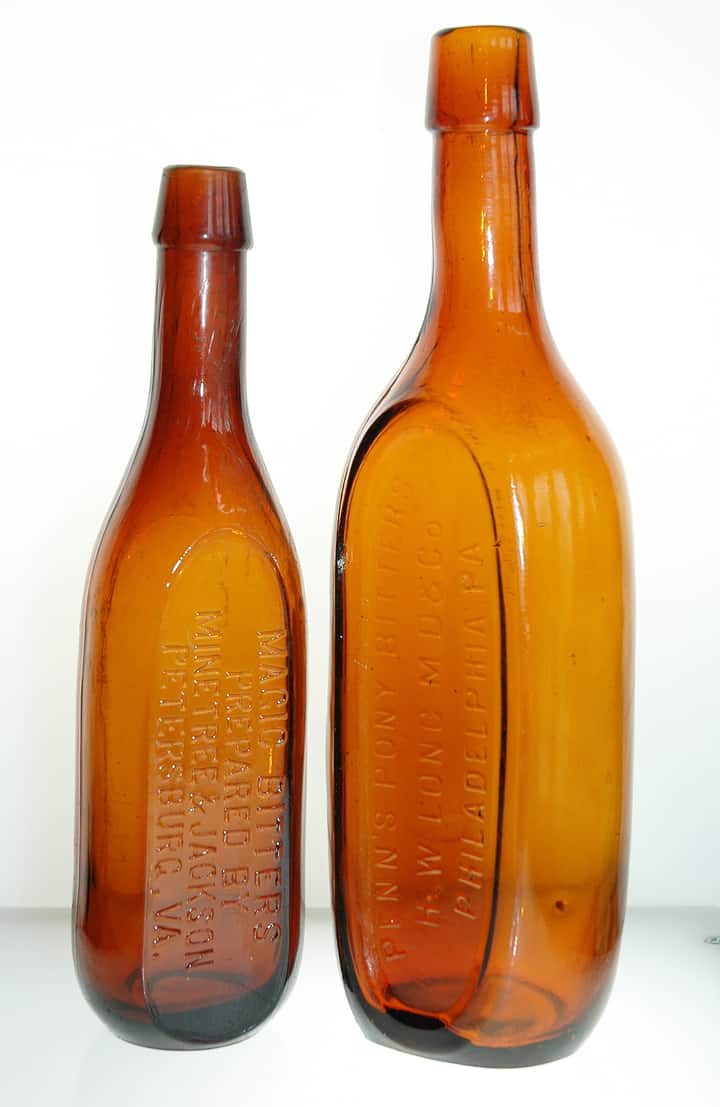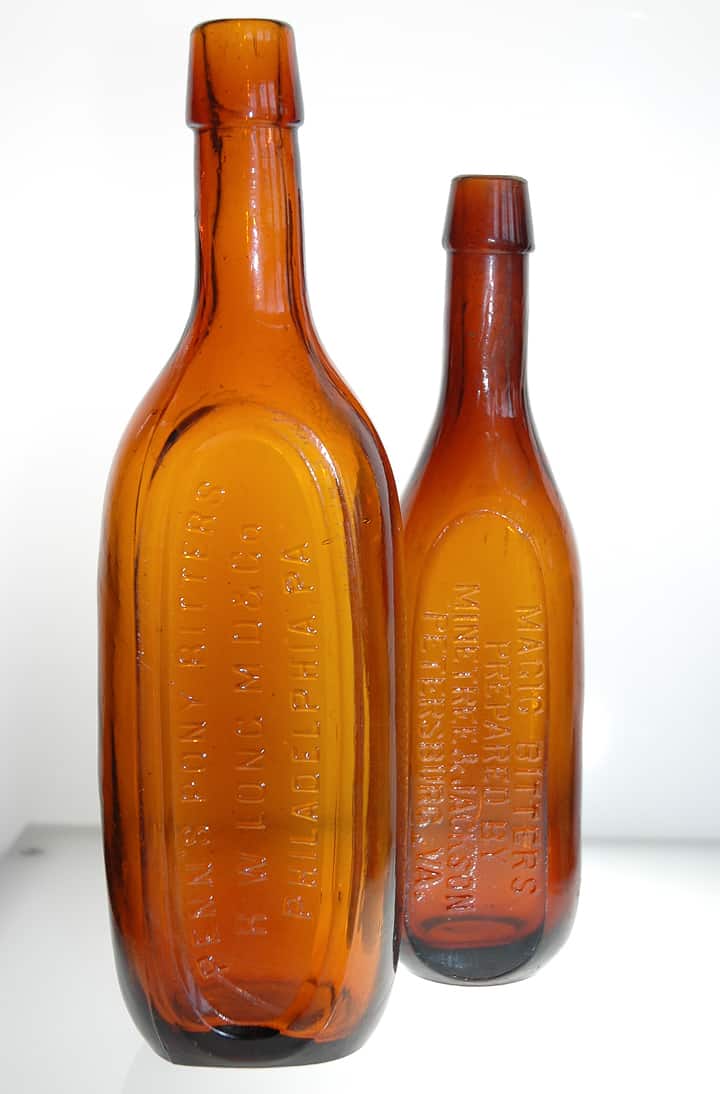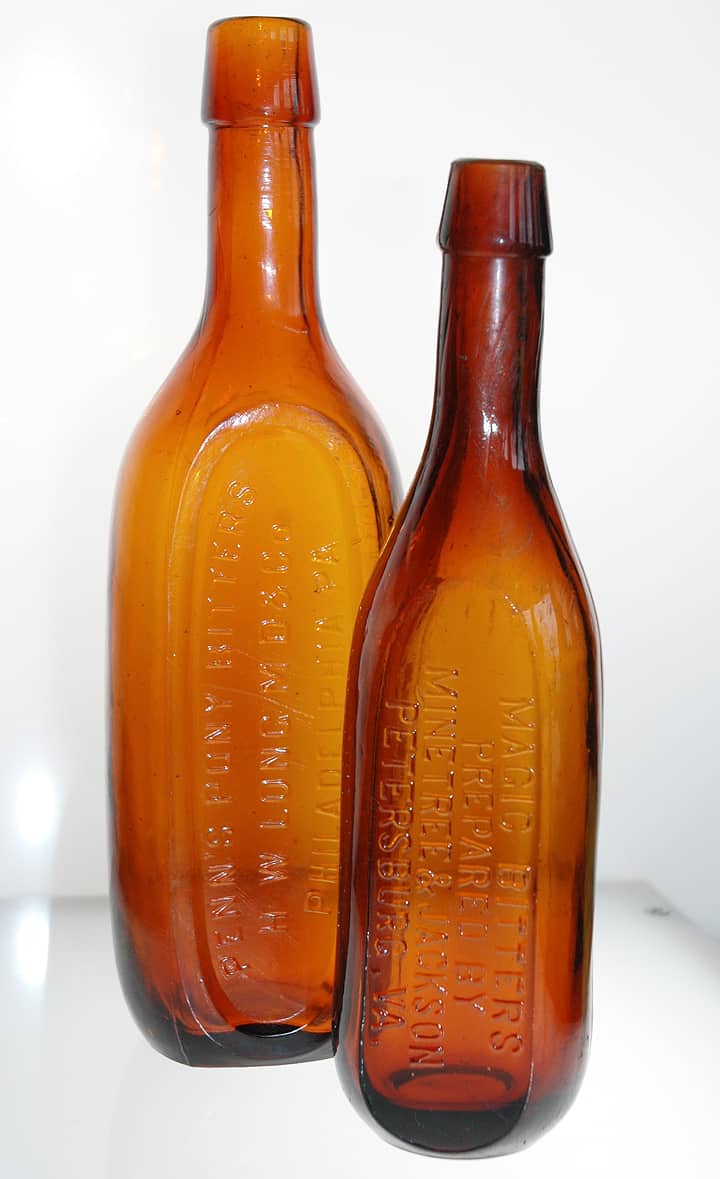Is the Magic Bitters related to the Penn’s Pony Bitters?
10 March 2014 (R•031214)
![]() At the Baltimore Antique Bottle Show the weekend before last, I was able to add a Magic Bitters, put out by Minetree & Jackson, Petersburg, Virginia, to my collection. This bottle has a very unusual shape and is similar to the larger, Penn’s Pony Bitters put out by H. W. Long, M.D. in Philadelphia, Pennsylvania. I thought I would take a moment and compare the bottles and see if they are related.
At the Baltimore Antique Bottle Show the weekend before last, I was able to add a Magic Bitters, put out by Minetree & Jackson, Petersburg, Virginia, to my collection. This bottle has a very unusual shape and is similar to the larger, Penn’s Pony Bitters put out by H. W. Long, M.D. in Philadelphia, Pennsylvania. I thought I would take a moment and compare the bottles and see if they are related.
First, let’s look at some information, pictures and listings in Bitters Bottles.
Penn’s Pony Bitters
Penn’s Pony Bitters is embossed “H. W. Long M. D. & Co., Philadelphia. “The lettering runs from base to shoulder which is opposed to the Magic Bitters lettering which runs from shoulder to base. Searching online in Philadelphia, reveals two H. W. Longs in the later part of the 19th century. The first is a clerk and the second is a physician. Trailing the physician listing reveals Howard W. Long who was born in Pennsylvania around 1856. His father was George W. Long and his mother was Sarah A. His father ran a tobacco store according to United Stated Federal Census records.
In 1874, Howard was 18 years old and was listed as a salesman, probably hawking medicines. In 1877, he was a student presumably getting his medical degree. From 1878 to 1921, Dr. Howard W. Long is listed as a physician at various addresses in Philadelphia. The fact that there are few examples of the Penn’s Pony Bitters bottles suggest that Dr. Long had a short relationship with making and selling his bitters.
It is interesting to note that Crawford Williamson Long (November 1, 1815 – June 16, 1878) was an American surgeon and pharmacist best known for his first use of inhaled diethyl ether as an anesthetic. He received his M.D. degree at the University of Pennsylvania in 1839. Although his work was unknown outside a small circle of colleagues for several years, he is now recognized as the first physician to have administered ether anesthesia for surgery. One of the large Emory Hospitals in downtown Atlanta is named after Crawford Long. I can find no family genetic relationship but I have a hunch there is one.
The listing for the bottle in the Carlyn Ring and W. C. Ham Bitters Bottles book is as follows:
P 40 PENN’S PONY BITTERS
PENN’S PONY BITTERS ( au ) / H. W. LONG M.D. & CO. / PHILADELPHIA
9 x 3 x 1 3/4 (5 7/8)
Oval, Amber, LTC, Tooled lip, 1 sp, Extremely rare
Lettering Base to shoulder
Drug Catalog: 1901-2 JP&K Co.
Select Howard W. Long, M.D. Listings
1874: Howard W. Long, salesman, h. 443 N. 6th – Philadelphia, Pennsylvania City Directory
1877: Howard W. Long, student, h. 443 N. 6th – Philadelphia, Pennsylvania City Directory
1878 – 1880: Howard W. Long, physician, 532 Franklin – Philadelphia, Pennsylvania City Directory
1882 – 1884: Howard W. Long, physician, 810 N. 8th – Philadelphia, Pennsylvania City Directory
1885 – 1900: Howard W. Long, physician, 941 N. 12th – Philadelphia, Pennsylvania City Directory
1900: Howard W. Long, Homeopathic Physician, 941 N. 12th – Boyd’s Co-partnership and Residence Business Directory of Philadelphia City
1910: Howard W. Long, Physician, wife: Clara E., children: Edith M., Walter G., Herbert W.- 1910 United States Federal Census
1917: Howard W. Long, physician, 1226 Allegheny Avenue – Philadelphia, Pennsylvania City Directory
1920: Howard W. Long, Doctor, Medical, wife: Clara E., children: Edith M., Walter G., Herbert W., Annie – 1920 United States Federal Census
1921: Howard W. Long, physician, 1226 Allegheny Avenue – Philadelphia, Pennsylvania City Directory
Magic Bitters
My new and smaller Magic Bitters is also embossed, “Prepared by Minetree & Jackson, Petersburg, Va.” George A. Minetree and Hugh D. Jackson were listed as druggists in the 1886-92 Petersburg, Virginia City Directories. Interestingly enough, George Minetree was at the same address as William E. French of French’s Cockade Bitters and French’s Virginia Tonic Bitters. Read: Two bitters that W. E. French was selling in Petersburg, Virginia.
It is quite possible that Minetree and Jackson had their bottle made at D’Alton & Bain, who were bottlers in Petersburg, Virginia. These guys probably made the bottles for the Winfree’s Bitters from Petersburg and Chester. Read: The Winfree’s Bitters Family
Select Minetree and Jackson Listings
1882: George A. Minetree, druggist clerk, 202 N. Sycamore (same address as William E. French of French’s Cockade Bitters and French’s Virginia Tonic Bitters) – Petersburg, Virginia City Directory
Hugh D. Jackson, drug clerk, bds 24 Lombard, Petersburg, Virginia City Directory
1886 – 1892: Minetree & Jackson, (George A. Minetree and Hugh D. Jackson) druggists 225 N. sycamore (see listing below) – Petersburg, Virginia City Directory
The listing for the bottle in the Carlyn Ring and W. C. Ham Bitters Bottles book is as follows:
M 8 MAGIC BITTERS
MAGIC BITTERS / PREPARED BY / MINETREE & JACKSON / PETERSBURG, VA. // c //
7 7/8 x 2 1/4 (4 3/4)
Round, Amber, LTC, Tooled Lip, Extremely rare
Unusual shape, Similar to Penn’s Pony Bitters
City Directory (Petersburg, Virginia) 1886-92, George A. Minetree & Hugh Jackson, druggists.
Conclusion
These bottles were made during the same time period. Petersburg, Virginia is 470 miles from Philadelphia which is quite a distance but in other respects, not so far. The bottles are different sizes but so unusual that one must have been copied from the other. Note the coloration which is very similar. As noted before, the Penn’s Pony Bitters lettering runs from base to shoulder which is opposed to the Magic Bitters lettering which runs from shoulder to base. The typography is basically the same though there are slight differences with the characters. The letterspacing is more open on the Penn’s Pony Bitters.
I must say that I was never very enamored with the Penn’s Pony Bitters shape until I paired it with the Magic Bitters. They now sit proudly together begging for someone to complete the story.
Update from Marianne Dow:
Perhaps the Jackson-Long-Minetree connection was that they, or family members met in the military, exchanged ideas, and thus used the same bottle maker.
Read: Southern Historical Society papers (1876)

